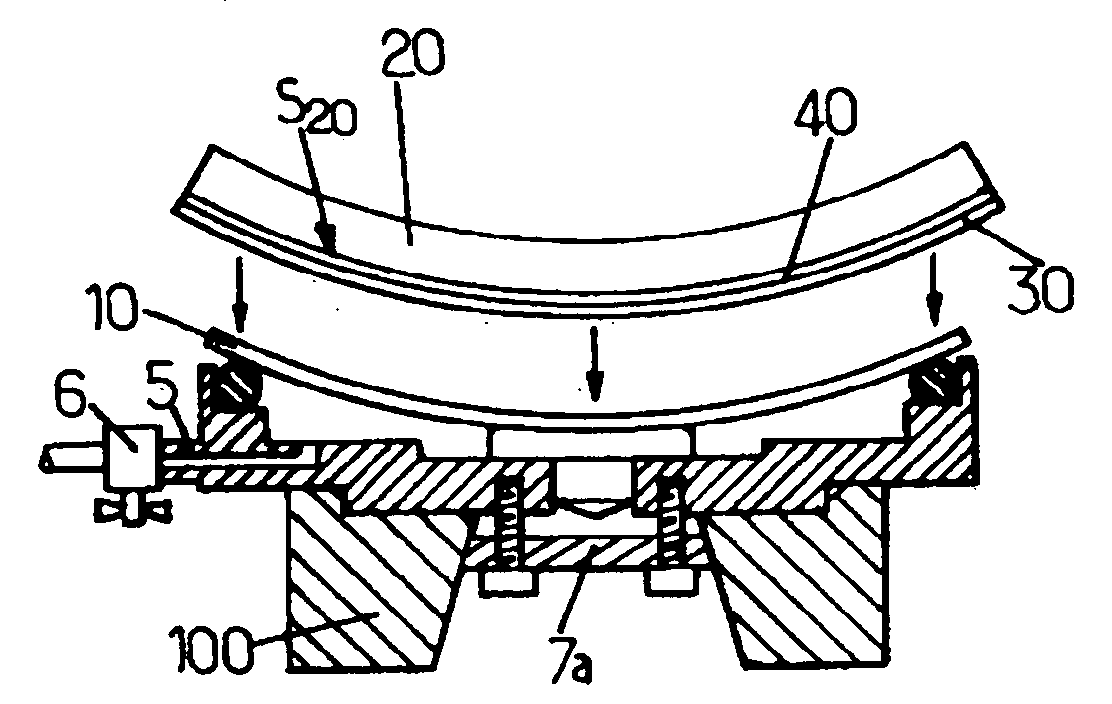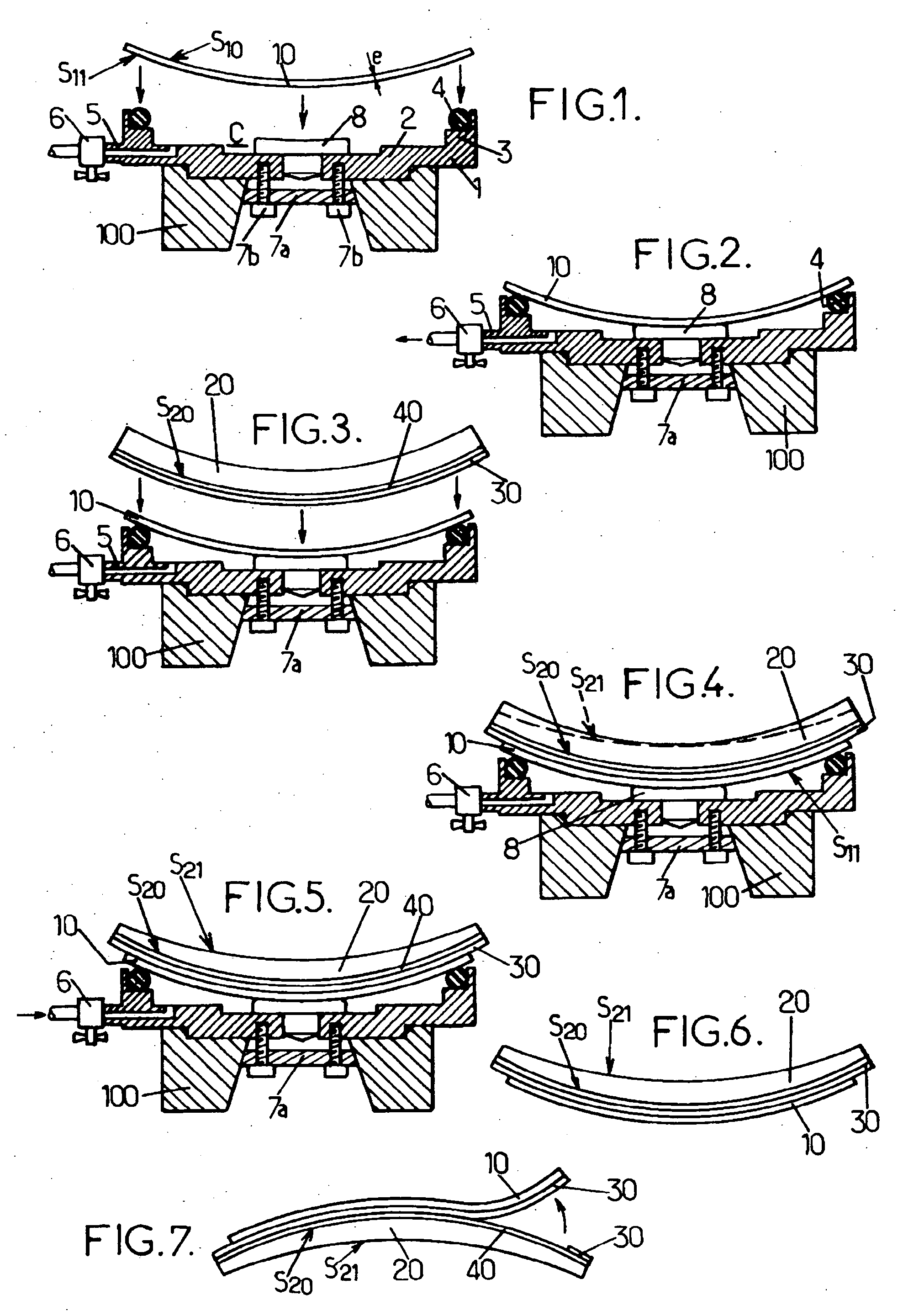Process for holding an optical lens on a holder of a lens machining equipment
a technology of machining equipment and optical lens, which is applied in the direction of grinding machine components, grinding/polishing apparatus, grinding machines, etc., can solve the problems of preventing accurate machining, affecting the quality of the lens, and altering the lens material, etc., and achieves the effects of easy removal of the optical element, high production rate, and very cheap materials
- Summary
- Abstract
- Description
- Claims
- Application Information
AI Technical Summary
Benefits of technology
Problems solved by technology
Method used
Image
Examples
Embodiment Construction
[0033]On FIG. 1, reference 1 refers to a suction chuck according to the invention. It comprises a bottom part 2 and a side wall 3 of generally cylindrical shape, so as to form an inner cavity C. The side wall 3 has a limited height, so that the suction chuck 1 can be easily fitted on a holder 100 of a lens machining equipment. Such lens machining equipment may be a lens surface generating machine, a lens polishing or fining machine, an edging machine, etc. In particular, it can be fitted on machines such as LOH's V95 or Toro-X-S / SL. Chuck 1 can be, for example, made of aluminum for light-weight purpose, or any other rigid material. Self-centering part 7a and screws 7b allow tight fixing of the suction chuck 1 onto the holder 100, but other equivalent systems may be used, depending on the actual holder 100.
[0034]The side wall 3 is provided with an O-ring seal 4 at its end opposite the bottom part 2. It is also provided on a side with an air conduct 5 which connects the cavity C to a ...
PUM
 Login to View More
Login to View More Abstract
Description
Claims
Application Information
 Login to View More
Login to View More - R&D
- Intellectual Property
- Life Sciences
- Materials
- Tech Scout
- Unparalleled Data Quality
- Higher Quality Content
- 60% Fewer Hallucinations
Browse by: Latest US Patents, China's latest patents, Technical Efficacy Thesaurus, Application Domain, Technology Topic, Popular Technical Reports.
© 2025 PatSnap. All rights reserved.Legal|Privacy policy|Modern Slavery Act Transparency Statement|Sitemap|About US| Contact US: help@patsnap.com


